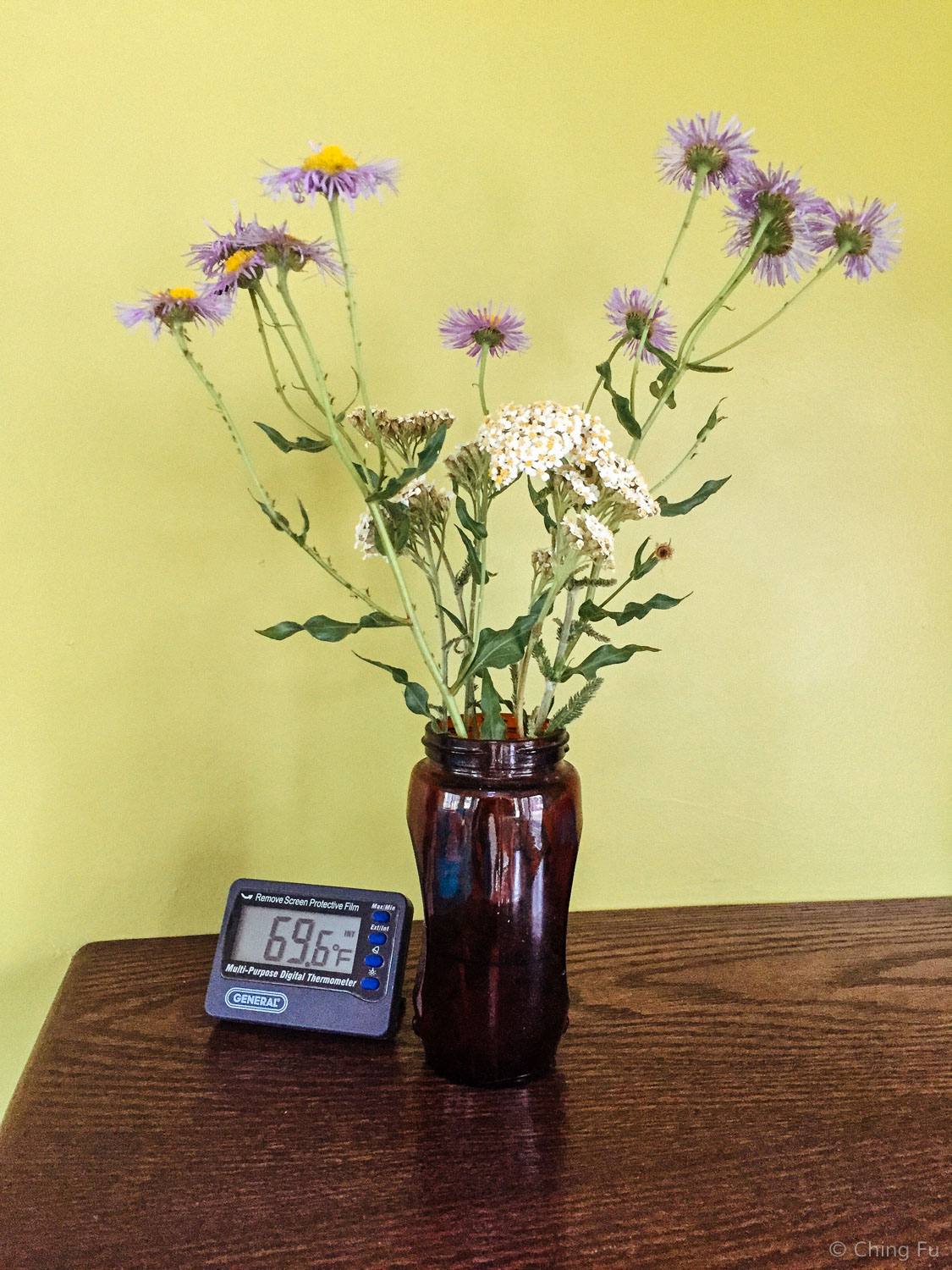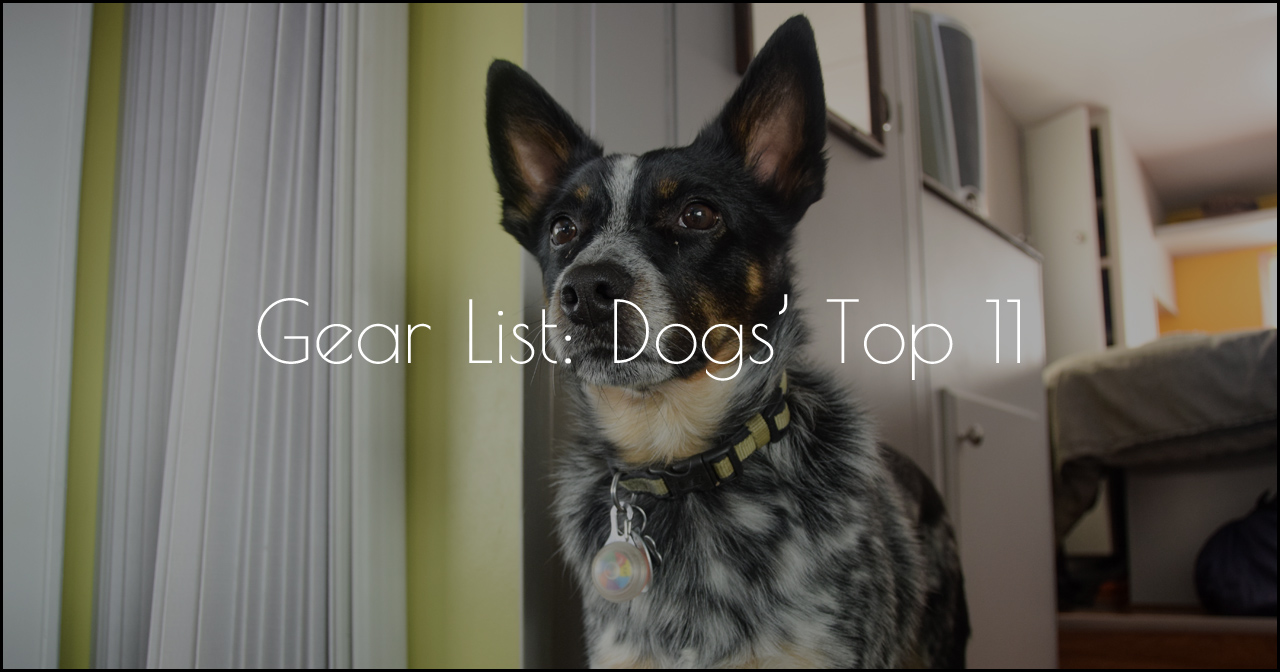Dogs & Heat: Keep Them Cool & Safe In An RV
Disclosure: This post contains affiliate links. Please read our full disclaimer.
Updated July 19, 2018
Someone recently emailed us asking what we do with our dogs when we can't bring them with us biking, hiking, trips into town, etc. As I responded back to her and saw my answer get longer and longer, I realized this would be a good topic to write about. This post will cover where we keep our dogs when they have to left behind and how we keep them cool and safe without having an A/C inside our RV (keep reading to find out why we don't have an A/C).
Please note that your dog's breed, tolerance for heat, and health along with your RV size and layout will be different from ours. Take our ideas and recommendations as just that, but please base your decisions on your specific situation and pets. Don't leave your pets alone if you're unsure about the situation. It's not worth losing your pet!
Those that know us personally know that we absolutely love and adore our dogs. For the most part we bring and have them do everything that we do. But the reality is, Tybee is now 12.5 years old and has a pretty bad case of arthritis so there are more times than we'd like that she can't join us on outdoor activities.
Then there are days when we want to go on a longer and faster mountain bike ride than Tyki can handle so he'll stay behind. And of course there are national parks where dogs can't venture further than the parking lots and paved roads.
The first and most important tip: If it's going to be a really hot day, simply don't leave your pets inside the RV on their own. Life on the road tends to be pretty flexible. Reschedule your plans to keep your pets safe rather than leaving them by themselves in an RV. If plans just can't be rescheduled then another option is to find a doggy daycare to bring your dogs. Also don't forget, one of the great things about living on the road is that you're mobile! If the weather isn't working out for you then go somewhere else. Jerud and I have made a conscious decision to not travel to places like Arizona and Texas during the summer months. We have no interest in mountain biking or hiking in 90+ degrees, anyway.
Before we ever left Tybee and Tyki on their own in the RV, we kept an eye on how the RV felt to us - and them - in different temperatures and weather. One of our top buys is a small digital thermometer that we leave in the main room so we always know what temperature is inside the trail (we also use the remote probe to watch for freezing water pipes in the winter!). We watched how the dogs reacted in various temperatures while we were with them. This helped us know what temperature range is comfortable for them and how cool the RV stayed in various conditions.
RVers typically park under trees to keep their rigs cool or park facing a certain direction so they can put the awning out for extra shade. But since our RV runs fully on solar power, we are always parked with the butt facing south, and when we chose a parking spot, it's typically in a location that has few to no trees. Although we don't use tree shade to keep the RV cool, this orientation means only one tiny window is facing south, and a lot of the sun's energy which would hit the roof and become heat is instead turned into electricity by our solar array. The shiny siding and extra insulation helps, too.
When Tybee and Tyki are left in the RV alone, we typically leave all the windows and vents open. Sometimes we will close the blinds on the sunny side of the RV during the hottest part of the day. Reflectix is not only useful in the winter to keep RVs warmer inside, but it can also keep RVs cooler during the warmer months. The trick is to cover RV windows with Reflectix early in the morning, while the inside is already cool. Having Reflectix in windows will keep the sun out and keep it cooler inside the RV. But know that you will have to pick and choose when you use the Reflectix because with the windows covered it means that windows can't be opened for ventilation. Reflectix can also work well when running the A/C.
In addition to opening windows and vents, we also utilize ceiling fans to help keep the RV cool. While we have four ceiling fans in the RV, we typically just leave our two Fan-Tastic fans on. In the main RV room we have the Fan-Tastic 7350 model. This is their fanciest fan - it has reversible airflow, rain sensor that closes when it gets wet, thermostat and remote (nice, because we can't reach it in the high ceiling where it's located). We leave this fan on to blow air into the RV. The other Fan-Tastic fan is the 1200 model, and is their most basic model, which only pulls air out from inside the RV. This fan is installed in the bedroom. Turning these two fans on creates air circulation inside the RV.
Fan-Tastic 7350 model
Jerud and I were initially so excited when we came across the Fan-Tastic 7350 model fan, mainly because of the rain sensor feature. But after using it we realized that it's only half clever - the rain sensor does close the fan vent when it feels the rain, but it can't tell once it's stopped raining to reopen the vent (this is because the rain sensor is placed under the vent cover). This is a problem because we have the fan running/vent opened for a reason and would want it to reopen after it stops raining. Fan-Tastic does make an Ultra Breeze Vent Cover that is an upright stationary vent cover with the vent on the side. This would solve the problem of the rain sensor making the vent not open back up, but with the Ultra Breeze vent cover you also wouldn't need the rain sensor feature because where the vent is placed it wouldn't really let rain in (unless it rained sideways). The downside of the Ultra Breeze is that it would create a large shadow on our solar panels. So, we are looking of an alternative replacement for our 7350 model fan. Let us know if you have any recommendations!
In addition to the vent fans, we also have a floor fan that we'll pull out to help keep things cool. And always leave a full bowl of water!
One thing to keep in mind is that 80 degrees out west is very different from 80 degrees in the east. Humidity plays a large part in how warm it feels to us. Because the humidity is a lot higher in the east, 80 degrees there feels a lot warmer than 80 degrees in drier states in the west.
When we started our RV rebuild, we removed our A/C and didn't replace it; a standard RV A/C just didn't fit well into our strategy. While not impossible, boondocking with RV air conditioning is technically difficult. With the wattage we have, we actually could have run the 15,000 BTU RV A/C that came with our trailer for about 3 hours. But that would not be enough to safeguard the dogs, and would leave us with no juice for refrigeration, cooking, or even lights. Also, the A/C shroud on the roof would have left less room for solar panels, plus it would have shaded most of the panels around it for much of the day. So far we haven't felt the need for A/C, but we are searching for a solution that would work with a fully solar powered RV in case we decide that we need one.
Before we hit the road we did look into purchasing a Wi-Fi thermometer so that we could tell what temperature it was inside the RV while we were away. But the main problem with Wi-Fi thermometers is that they need internet connection both at the RV and where we are to work. Since we mainly boondock and explore remote areas, this would rarely work for us. There are also thermometers that work via cell signal, but that wouldn't be much better. As great as those devices would be, it doesn't fit our lifestyle.
As of now, all the above is working out for us. I know the tips above are really simple, but if we're ever in a situation that needs more than the stuff we mentioned above then we don't leave the dogs behind in the rig.
Signs of Overheating in your Dog
It's important to recognize signs of overheating in your dog (whether they're inside your rig or out in town or on the trail).
Excessive panting
Hyperventilation
Dry gums that become pale (although some sites say watch out for gums turning blue or bright red)
Increased salivation
Erratic or rapid pulse
Confusion
Weakness
Diarrhea
Vomiting
Possibly rectal bleeding
If your dog shows any of these symptoms, call a vet immediately. Then cool them down by putting wet towels against her neck, armpit, and between hind legs. Wet her ear flaps and paws. Don't force your dog to drink if she's not interested in the water you offer, instead, wet her tongue. Don't offer ice cubes (or really cold water) because it can cause her temperature to drop dramatically and cause shock.
Other Staying Cool tips and tricks
We haven't personally tried any of these suggestions but have heard of other full-timers that have:
Blow a fan over a bucket of ice
Self-cooling pad (pressure activated)
Ruffwear Swamp Cooler (to activate, soak in water, wring out, put on your dog; it's made for the outdoors.)
We'll keep you posted if new tips and ideas come up as we spend more time living on the road. In the meanwhile, we'd love to hear what you do with your pets when you can't bring them with you on day trips.






